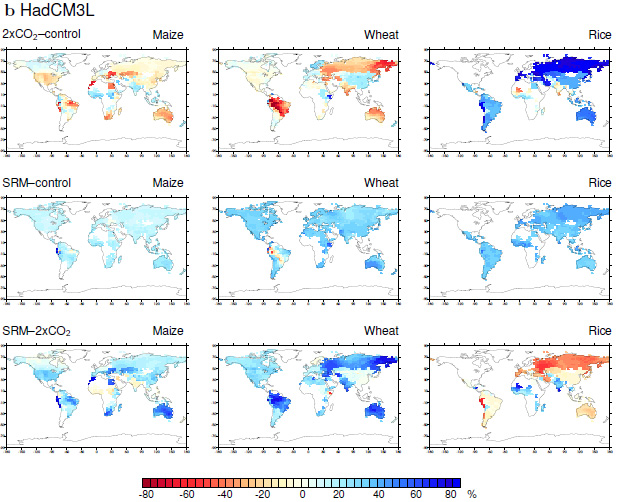CO2
All SRES emission scenarios call for CO2 levels to increase significantly over the course of the 21st century. Even with drastic actions, levels are predicted to reach 550 ppm mid-century before decreasing. Worst-case scenarios have levels continuing to rise beyond 650 ppm at the end of the century. Compared to other climate variables, increasing CO2 generally has a positive impact on crops, leading to increased crop yields (see figure below). CO2 is key to photosynthesis; the gas is what is known as a limiting nutrient for plant growth. Without a certain amount of CO2, plants will fail to grow. CO2 acts as a fertilizer for crops like rice, soybeans, and wheat and enhances growth rates. The impact of increased CO2 is only known via experiments, and they show increases in production from 5-20% at CO2 levels of 550 ppm. The key uncertainty is how realistic experiments are at predicting the real world. There is a consensus among scientists that the real changes in yield might be slightly less than those in the lab.

